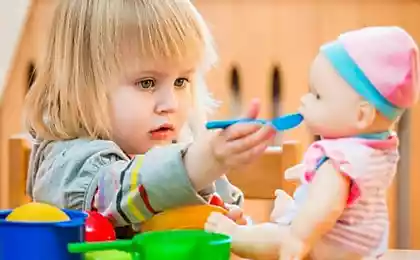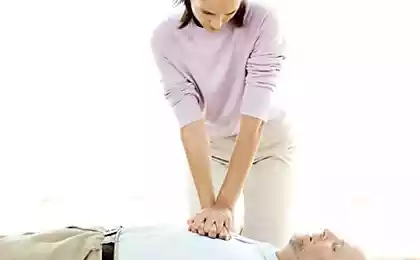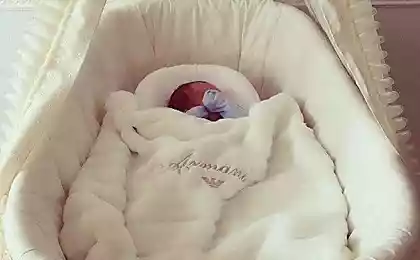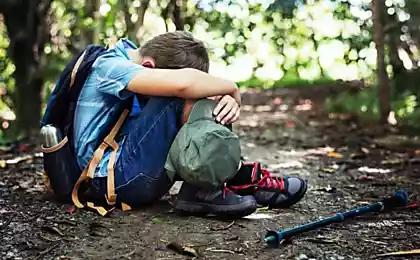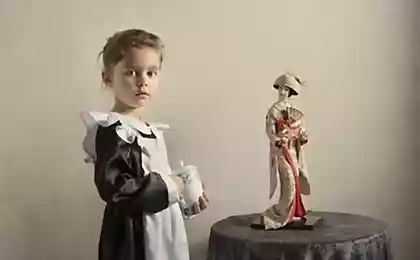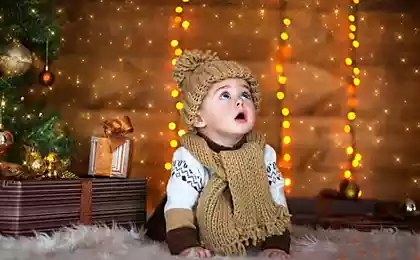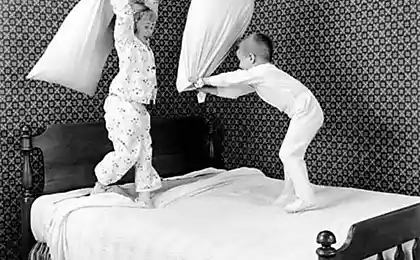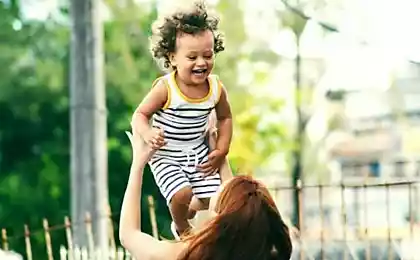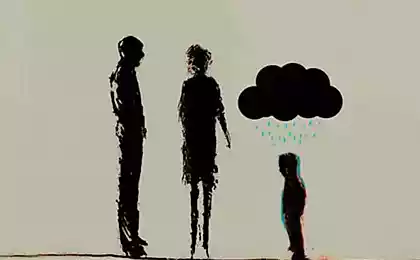574
Important! First aid to a child in an emergency
It happens that before the arrival of the doctor need to render emergency assistance. How to do it in different situations
THE CHILD CHOKED
Free mouth from vomit and food debris with your finger or handkerchief. Put the baby on his hand face down, supporting the chin and the back. Make a hand of up to five sharp claps on his back. Check for foreign objects in the oral cavity of the child and remove them.
If the first option does not bring results, place the child on his hands or knees face down. Make up to five jolts with his fingertips in his chest the width of a finger below the line of his nipples. Don't press on his belly!
If a foreign object does not come out, repeat steps 1 and 2 three times, call an ambulance. Repeat procedure 1 and 2 until the arrival of ambulance crews.
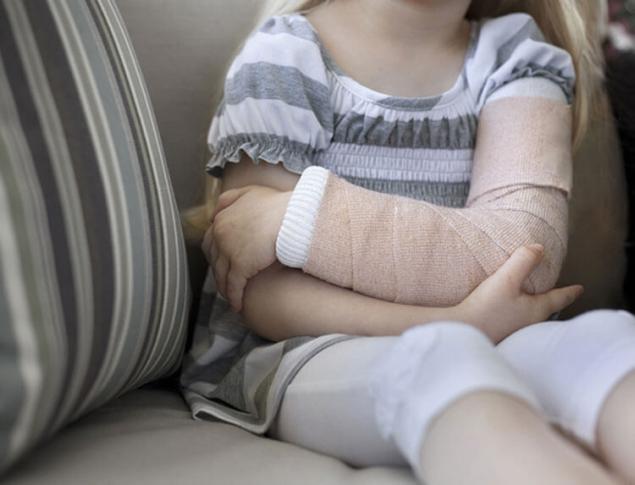
THE CHILD SWALLOWED POISON
Try to find out what was swallowed by a child. Don't call him vomit. If poisoning fluid was of acid or alkali, it is impossible to give the child to drink. Do not use solutions of acid or alkali to neutralize the effects of the substance.
In cases of poisoning by medicines, if the child is conscious, give him large amounts of clean water. Do not enter any neutralizing.
If the child is unconscious, turn his head to one side to prevent aspiration of vomit into the respiratory tract.
In all cases of poisoning it is necessary to call an ambulance! Heading to the hospital, take samples of substances and vomit of a child.
CHILD IS SCALDED OR BURNED
Hold the burn under cold running water until the pain. Do not attempt to remove stuck to the wound clothes! Cover the burnt skin area with a sterile bandage. Do not pierce blisters!
If the burn is deep or extensive, immediately call an ambulance. Do not let your child eat or drink anything. If the burn is shallow and neabry, contact your local casualty Department for advice. The victim can give pain medicine, observing age-related dosage.
For burns of the eyes to wash eyes with plenty of cold water.
Burns of the esophagus by acid or alkali should not induce vomiting or give the victim drink plenty of liquids as this will only worsen his condition.
THE CHILD GOT FROSTBITE
In any case, do not try to warm the frostbitten limb or part of body! It is necessary to impose heat-resistant bandage ( e.g., of cellophane and cotton wool) which will not allow the temperature change on the frostbitten area. Warming the tissue should occur in a natural way, that is from the inside. Otherwise, the possibility of tissue death. This is due to the fact that the frostbitten cells on the top layer cut off from the supply of blood freezed cells of the deeper layer. If the first "Wake up" the top of the cell, they do not get food and die. Therefore, the less heat will get the top layer of a frosted surface, the better.
Be sure to call for an ambulance!
Victim, it is possible to warm from the inside, giving him tea and other warm beverages.
THE CHILD HIT HIS HEAD
If the child is unconscious, call an ambulance. If he fell, hit his head and got a bruise, apply to the injury site folded a clean cloth and a bag with ice. If the child looks confused and shows a delayed reaction, he suffers from nausea and a severe headache, call an ambulance.
Monitor the airway.
THE CHILD GOT AN ELECTRIC SHOCK
Disconnect the electrical power. If this is not possible, stand on a thick telephone directory or a thick pile of Newspapers and release the child or remove electric appliance using a dry wooden MOP, broom or wooden chair.
Call for an ambulance. In the absence of signs of life, do simultaneously closed cardiac massage and artificial respiration.
THE CHILD GOT A FRACTURE OR SPRAIN
Put or put the child and fix the damaged area with a soft bundles of sweaters or sheets, so it was convenient.
If there is swelling, apply a cold compress, such as soaked in ice water dressing. If you have an open injury, use a sterile dressing. If possible, elevate the injured limb.
Call an ambulance or take the child to the emergency room.
THE CHILD GOT A CUT OR BLEEDING
With arterial bleeding (pulsing stream of red blood) try to stop the bleeding with a tourniquet — a rubber tube or a tightly twisted piece of cloth above the wound.
In venous bleeding (slow flowing dark blood) apply a firm pressure bandage to the wound. Depending on the child's condition call an ambulance.
In capillary bleeding, hold the wound, and if possible, raise the injured limb. Apply to bleeding area with a sterile pressure bandage, with gemostaticescoy sponge. If the bandage is soaked with blood, no change is recommended. Put a bandage over an ice pack.
If the wound is sticking it to glass or any other object, hold down the space around the wound, not her.
When bleeding from the nose put the baby on the nose and put a bag of ice. In the nasal passages, you can insert a tampon soaked in 2% solution of hydrogen peroxide.
THE CHILD IS IN A STATE OF SHOCK
Shock the child may be the result of bleeding, burns, or plain fear. You will see that the baby was pale, his skin became cold and damp, and in some instances there is a fever and emerges a cold sweat. All this may be accompanied by shortness of breath and dizziness, and sometimes vomiting.
After accidents, the children often go into shock, so if any accidents should be immediately taken antishock measures, even when the child has no signs of shock.
Put the child on the side and make sure he's breathing. Loosen clothing at the neck, chest and waist. Wrap up baby, but not overheat it. The child should remain at rest, and You have to be around him and reassure him until the ambulance arrived.
CHILD DROWNING
If possible, pull it out of the water. Otherwise assist directly in the water.
Detach the mouth from the water. If the child is not breathing, start artificial respiration mouth to mouth. Do not attempt to remove the water from the lungs or stomach. If you have a child, put his head down to reduce the risk of water getting into the lungs.
Put it on clothes or a blanket, clear Airways, check breathing and pulse.
As soon as the baby starts breathing, remove wet clothes and cover him up with something dry and warm. In any case, take him to the hospital, even if it looks good and everything is not complaining.
THE CHILD HURT HIS EYES
Eyes — the most sensitive human organs. They are very easy to damage, and if this happens, it is urgent to help the victim.
A damp piece of cotton wool, remove a foreign body from the eyes of a child. If for some reason you are unable to do so, or after the removal of the pain does not subside, cover your eyes with a soft, clean cloth and take the child to the hospital or call an ambulance.
If the child has eye injury, apply a sterile dressing and immediately bring to the hospital.
In case of contact with eyes, chemical substances, rinse it with plenty of cold clean water for at least 15 minutes. Cover with a clean gauze bandage and take your child to the hospital.
THE CHILD SUFFERED BITES
Mosquito bites, mosquitoes, midges, wasps or bees not only painful, but also cause hardening, redness, swelling and intense itching at the bite location. Some people, fortunately very few, bee stings can cause severe allergic reactions. If you see that child after such a bite begins to breathe heavily, you should immediately call an ambulance!
In normal cases, do the following. Remove the forceps remaining in the skin sting, trying not to damage it on the pouch of poison, the venom will penetrate the skin. The location of the bite, apply a cold compress — this will relieve the pain. Next, you can use drugs to relieve redness and itching. From mosquito bites to the usual green. published
P. S. And remember, just changing your mind — together we change the world! ©
Join us in Facebook , Vkontakte, Odnoklassniki
Source: vk.com/club_razvivajka?w=wall-20199180_178814
THE CHILD CHOKED
Free mouth from vomit and food debris with your finger or handkerchief. Put the baby on his hand face down, supporting the chin and the back. Make a hand of up to five sharp claps on his back. Check for foreign objects in the oral cavity of the child and remove them.
If the first option does not bring results, place the child on his hands or knees face down. Make up to five jolts with his fingertips in his chest the width of a finger below the line of his nipples. Don't press on his belly!
If a foreign object does not come out, repeat steps 1 and 2 three times, call an ambulance. Repeat procedure 1 and 2 until the arrival of ambulance crews.

THE CHILD SWALLOWED POISON
Try to find out what was swallowed by a child. Don't call him vomit. If poisoning fluid was of acid or alkali, it is impossible to give the child to drink. Do not use solutions of acid or alkali to neutralize the effects of the substance.
In cases of poisoning by medicines, if the child is conscious, give him large amounts of clean water. Do not enter any neutralizing.
If the child is unconscious, turn his head to one side to prevent aspiration of vomit into the respiratory tract.
In all cases of poisoning it is necessary to call an ambulance! Heading to the hospital, take samples of substances and vomit of a child.
CHILD IS SCALDED OR BURNED
Hold the burn under cold running water until the pain. Do not attempt to remove stuck to the wound clothes! Cover the burnt skin area with a sterile bandage. Do not pierce blisters!
If the burn is deep or extensive, immediately call an ambulance. Do not let your child eat or drink anything. If the burn is shallow and neabry, contact your local casualty Department for advice. The victim can give pain medicine, observing age-related dosage.
For burns of the eyes to wash eyes with plenty of cold water.
Burns of the esophagus by acid or alkali should not induce vomiting or give the victim drink plenty of liquids as this will only worsen his condition.
THE CHILD GOT FROSTBITE
In any case, do not try to warm the frostbitten limb or part of body! It is necessary to impose heat-resistant bandage ( e.g., of cellophane and cotton wool) which will not allow the temperature change on the frostbitten area. Warming the tissue should occur in a natural way, that is from the inside. Otherwise, the possibility of tissue death. This is due to the fact that the frostbitten cells on the top layer cut off from the supply of blood freezed cells of the deeper layer. If the first "Wake up" the top of the cell, they do not get food and die. Therefore, the less heat will get the top layer of a frosted surface, the better.
Be sure to call for an ambulance!
Victim, it is possible to warm from the inside, giving him tea and other warm beverages.
THE CHILD HIT HIS HEAD
If the child is unconscious, call an ambulance. If he fell, hit his head and got a bruise, apply to the injury site folded a clean cloth and a bag with ice. If the child looks confused and shows a delayed reaction, he suffers from nausea and a severe headache, call an ambulance.
Monitor the airway.
THE CHILD GOT AN ELECTRIC SHOCK
Disconnect the electrical power. If this is not possible, stand on a thick telephone directory or a thick pile of Newspapers and release the child or remove electric appliance using a dry wooden MOP, broom or wooden chair.
Call for an ambulance. In the absence of signs of life, do simultaneously closed cardiac massage and artificial respiration.
THE CHILD GOT A FRACTURE OR SPRAIN
Put or put the child and fix the damaged area with a soft bundles of sweaters or sheets, so it was convenient.
If there is swelling, apply a cold compress, such as soaked in ice water dressing. If you have an open injury, use a sterile dressing. If possible, elevate the injured limb.
Call an ambulance or take the child to the emergency room.
THE CHILD GOT A CUT OR BLEEDING
With arterial bleeding (pulsing stream of red blood) try to stop the bleeding with a tourniquet — a rubber tube or a tightly twisted piece of cloth above the wound.
In venous bleeding (slow flowing dark blood) apply a firm pressure bandage to the wound. Depending on the child's condition call an ambulance.
In capillary bleeding, hold the wound, and if possible, raise the injured limb. Apply to bleeding area with a sterile pressure bandage, with gemostaticescoy sponge. If the bandage is soaked with blood, no change is recommended. Put a bandage over an ice pack.
If the wound is sticking it to glass or any other object, hold down the space around the wound, not her.
When bleeding from the nose put the baby on the nose and put a bag of ice. In the nasal passages, you can insert a tampon soaked in 2% solution of hydrogen peroxide.
THE CHILD IS IN A STATE OF SHOCK
Shock the child may be the result of bleeding, burns, or plain fear. You will see that the baby was pale, his skin became cold and damp, and in some instances there is a fever and emerges a cold sweat. All this may be accompanied by shortness of breath and dizziness, and sometimes vomiting.
After accidents, the children often go into shock, so if any accidents should be immediately taken antishock measures, even when the child has no signs of shock.
Put the child on the side and make sure he's breathing. Loosen clothing at the neck, chest and waist. Wrap up baby, but not overheat it. The child should remain at rest, and You have to be around him and reassure him until the ambulance arrived.
CHILD DROWNING
If possible, pull it out of the water. Otherwise assist directly in the water.
Detach the mouth from the water. If the child is not breathing, start artificial respiration mouth to mouth. Do not attempt to remove the water from the lungs or stomach. If you have a child, put his head down to reduce the risk of water getting into the lungs.
Put it on clothes or a blanket, clear Airways, check breathing and pulse.
As soon as the baby starts breathing, remove wet clothes and cover him up with something dry and warm. In any case, take him to the hospital, even if it looks good and everything is not complaining.
THE CHILD HURT HIS EYES
Eyes — the most sensitive human organs. They are very easy to damage, and if this happens, it is urgent to help the victim.
A damp piece of cotton wool, remove a foreign body from the eyes of a child. If for some reason you are unable to do so, or after the removal of the pain does not subside, cover your eyes with a soft, clean cloth and take the child to the hospital or call an ambulance.
If the child has eye injury, apply a sterile dressing and immediately bring to the hospital.
In case of contact with eyes, chemical substances, rinse it with plenty of cold clean water for at least 15 minutes. Cover with a clean gauze bandage and take your child to the hospital.
THE CHILD SUFFERED BITES
Mosquito bites, mosquitoes, midges, wasps or bees not only painful, but also cause hardening, redness, swelling and intense itching at the bite location. Some people, fortunately very few, bee stings can cause severe allergic reactions. If you see that child after such a bite begins to breathe heavily, you should immediately call an ambulance!
In normal cases, do the following. Remove the forceps remaining in the skin sting, trying not to damage it on the pouch of poison, the venom will penetrate the skin. The location of the bite, apply a cold compress — this will relieve the pain. Next, you can use drugs to relieve redness and itching. From mosquito bites to the usual green. published
P. S. And remember, just changing your mind — together we change the world! ©
Join us in Facebook , Vkontakte, Odnoklassniki
Source: vk.com/club_razvivajka?w=wall-20199180_178814





